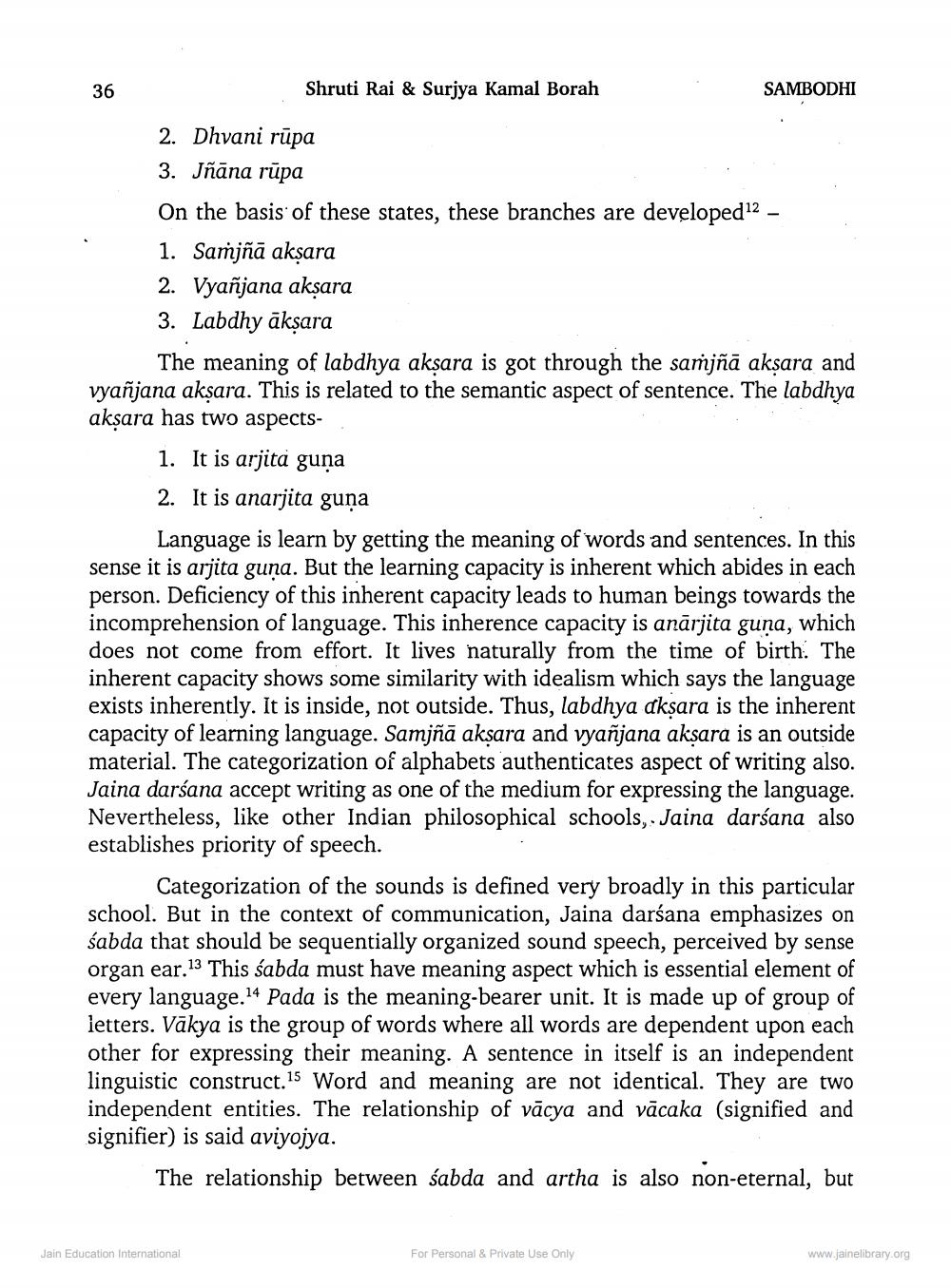________________
36
Shruti Rai & Surjya Kamal Borah
2. Dhvani rūpa
3. Jñāna rūpa
On the basis of these states, these branches are developed12 -
1. Samjñā akṣara
2. Vyañjana akṣara
3. Labdhy akṣara
The meaning of labdhya akṣara is got through the saṁjñā akṣara and vyañjana akṣara. This is related to the semantic aspect of sentence. The labdhya akṣara has two aspects
1. It is arjita guna
2. It is anarjita guna
SAMBODHI
Language is learn by getting the meaning of words and sentences. In this sense it is arjita guna. But the learning capacity is inherent which abides in each person. Deficiency of this inherent capacity leads to human beings towards the incomprehension of language. This inherence capacity is anārjita guna, which does not come from effort. It lives naturally from the time of birth. The inherent capacity shows some similarity with idealism which says the language exists inherently. It is inside, not outside. Thus, labdhya akṣara is the inherent capacity of learning language. Samjñā akṣara and vyañjana akṣara is an outside material. The categorization of alphabets authenticates aspect of writing also. Jaina darśana accept writing as one of the medium for expressing the language. Nevertheless, like other Indian philosophical schools, Jaina darśana also establishes priority of speech.
Jain Education International
Categorization of the sounds is defined very broadly in this particular school. But in the context of communication, Jaina darśana emphasizes on sabda that should be sequentially organized sound speech, perceived by sense organ ear.13 This śabda must have meaning aspect which is essential element of every language.14 Pada is the meaning-bearer unit. It is made up of group of letters. Vākya is the group of words where all words are dependent upon each other for expressing their meaning. A sentence in itself is an independent linguistic construct.15 Word and meaning are not identical. They are two independent entities. The relationship of vācya and vācaka (signified and signifier) is said aviyojya.
The relationship between sabda and artha is also non-eternal, but
For Personal & Private Use Only
www.jainelibrary.org




